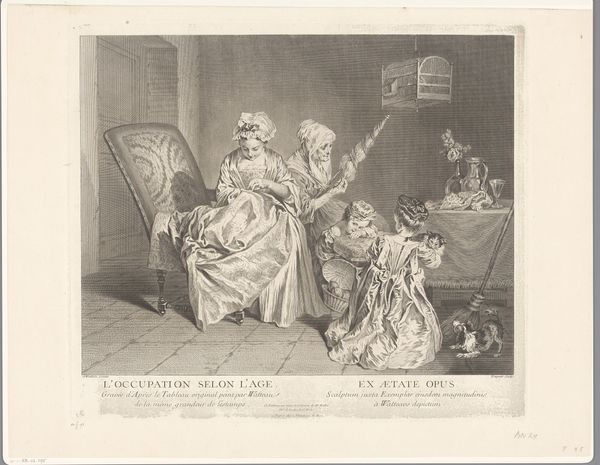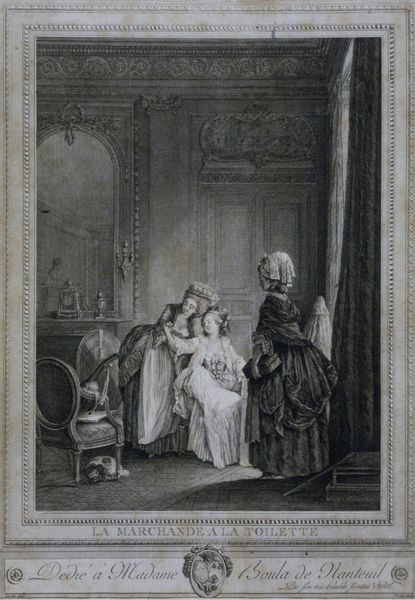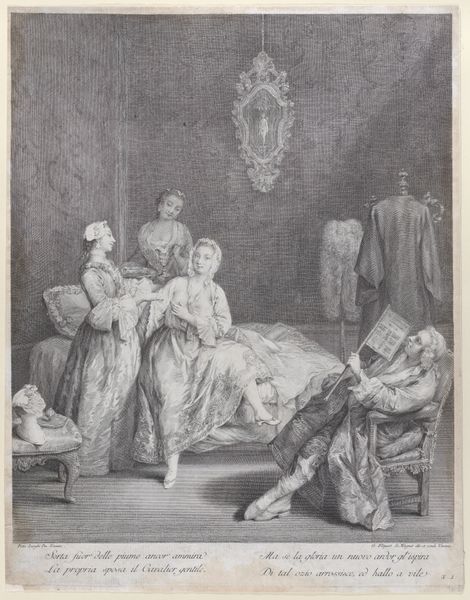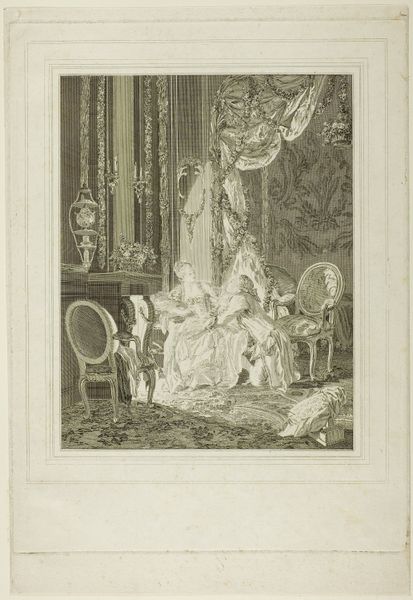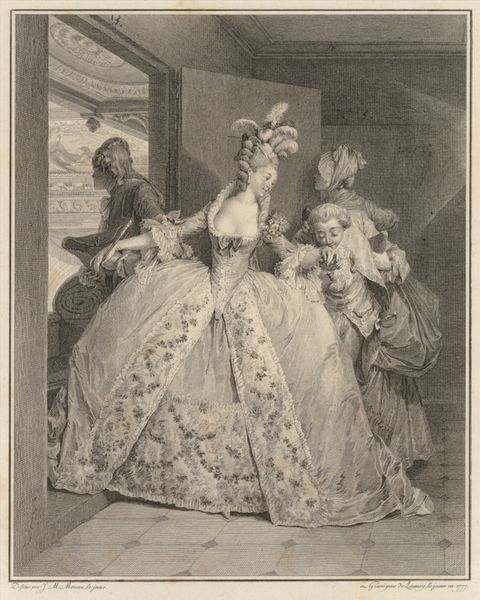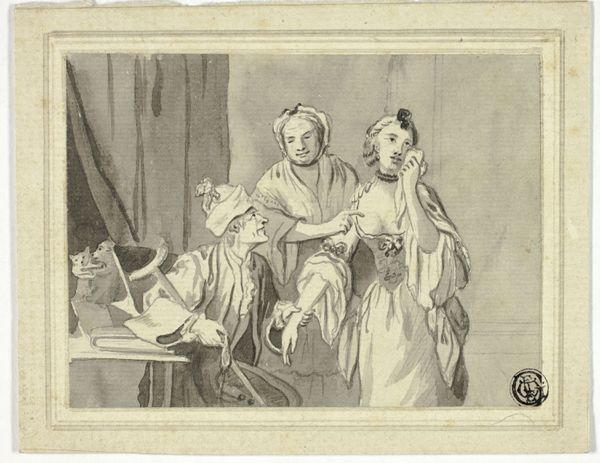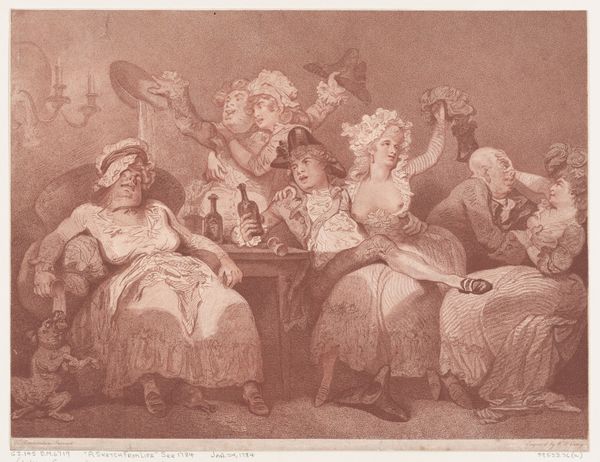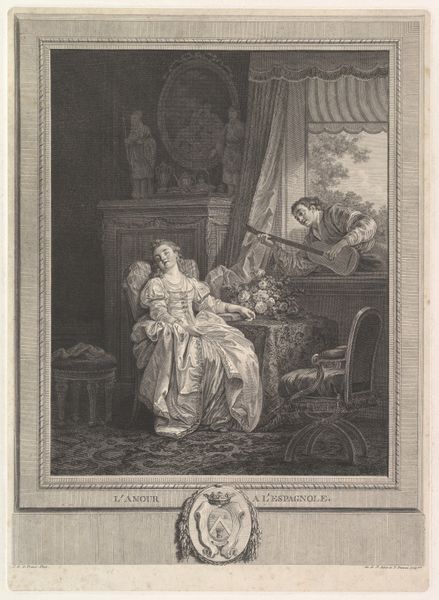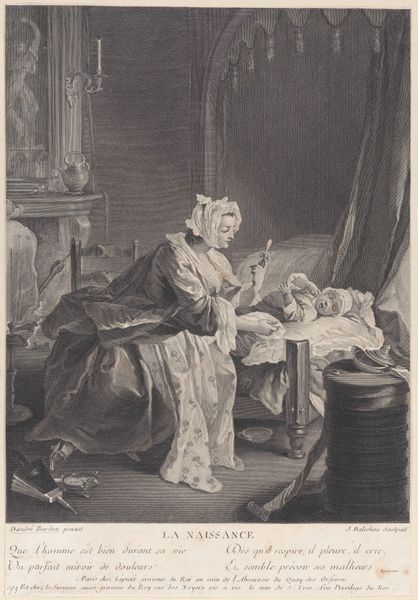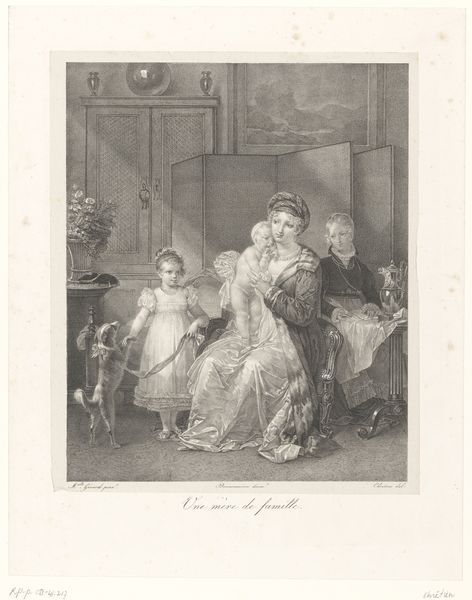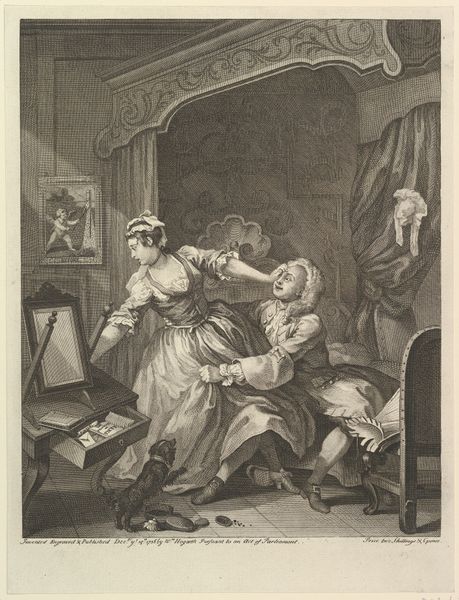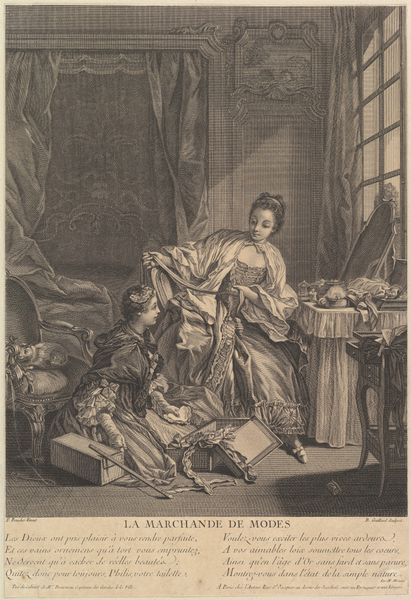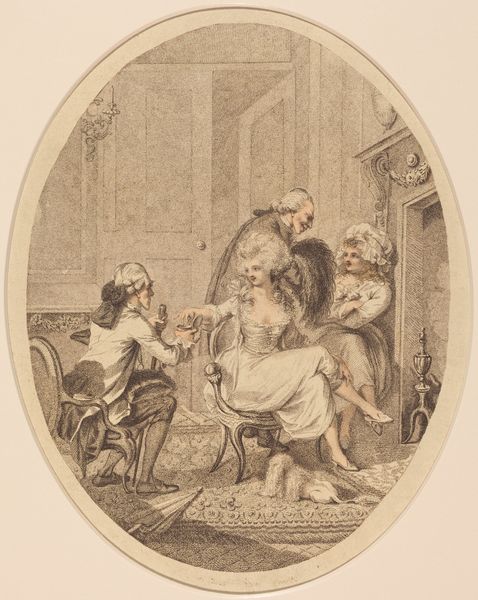
In einem Zimmer spinnt eine alte Frau, eine junge Frau näht, dabei zwei Kinder mit Hund und Katze
0:00
0:00
drawing, ink, pencil
#
portrait
#
drawing
#
netherlandish
#
ink
#
pencil drawing
#
pencil
#
15_18th-century
#
genre-painting
Copyright: Public Domain
Curator: This drawing, attributed to Aert Schouman, presents a domestic scene. It's titled "In einem Zimmer spinnt eine alte Frau, eine junge Frau näht, dabei zwei Kinder mit Hund und Katze," or "In a room an old woman spins, a young woman sews, with two children with a dog and cat". Editor: The composition is striking, especially with its gray palette that really emphasizes the lines. What I find especially noteworthy is the interior with its distinct vertical planes and clear lines which lead to an impression of structure, if perhaps a bit cold. Curator: These domestic interiors gained popularity in the 18th century. We're given access here to a narrative that touches on women’s work, intergenerational relationships, and childhood innocence, all playing out in the space of the home, but it certainly highlights societal roles, doesn't it? Editor: The strategic placement of objects creates these linear directions in the room. Consider the positioning of the birdcage, the table, or the chair; and each family member also reflects this spatial orientation. Even the children's positioning contributes to a comprehensive geometrical whole. Curator: Precisely. The presence of pets, like the dog and cat, add to this discourse as their social standing evolves to companion animals. It speaks to a burgeoning sense of sentimental domesticity and changing societal norms of the time, right? Editor: Well, perhaps. However, it is still more productive for me to analyze the way light plays across the image or the way the bodies are arranged with their backs mostly facing the viewer, especially, the youngest ones in the piece. I feel like this highlights something that can be grasped and seen in other artistic outputs. Curator: Fair enough. These works become particularly interesting as vehicles to observe gender and family dynamics during the era and this is why context enriches and complexifies how we see it, no? Editor: And from that initial arrangement in that geometrical orientation and how the image is lit emerges a more profound sense for its meaning, I will allow. Thank you, Aert Schouman, for prompting some more discourse and study. Curator: Absolutely. Aert Schouman delivers more than a family representation in this subtle exploration of changing cultural landscapes.
Comments
No comments
Be the first to comment and join the conversation on the ultimate creative platform.
